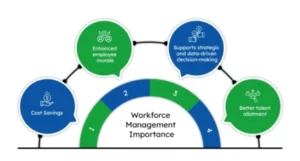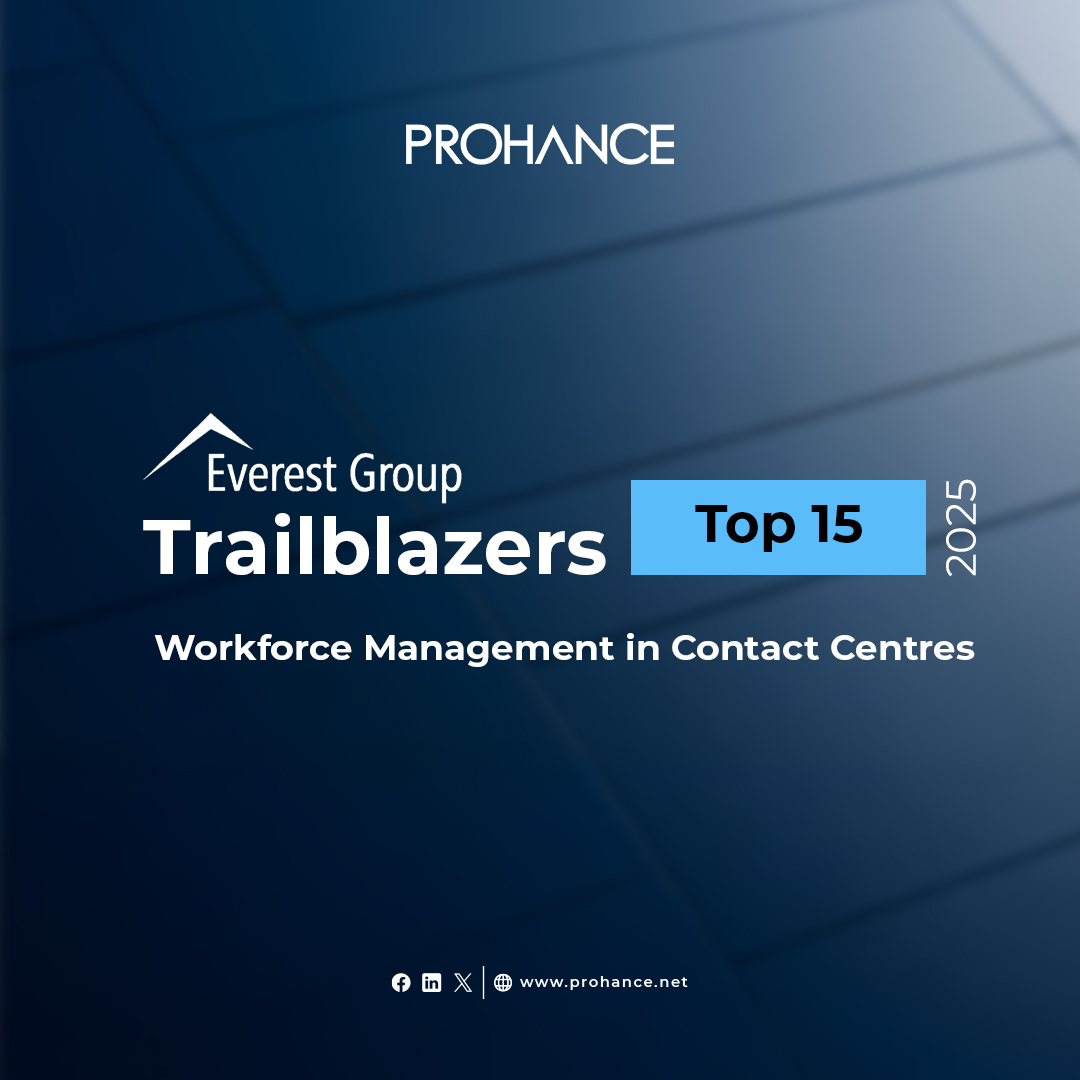5 Best Practices for Workforce Planning Software & Benefits
- What Is Workforce Planning Software?
- The Workforce Planning Process: Best Practices
- What Is Workforce Planning Software & System?
- Benefits of Effective Workforce Planning
- Best Practices for Workforce Planning Process
- How to Build a Workforce Plan with the Right Software
- The Workforce Planning Process: Best Practices
- Choosing the Right HCM
- Conclusion
- Frequently Asked Question
Organizations today face intense competition in the market, making strategic workforce planning essential for long-term success. A well-designed workforce planning system, supported by workforce planning software, helps organizations align talent strategy with business objectives. It enables firms to identify who is needed, which skills are required, and when these resources should be available, improving decision-making and workforce readiness.
In this article, we will provide a clear overview of what workforce planning is, explore the benefits of effective workforce planning, outline workforce planning process best practices, and guide you on how to build a workforce plan that meets your organization’s goals.
What Is Workforce Planning Software?
Workforce planning is a structured, process-driven approach that ensures an organization has the right people with the right skills to meet both current and future business goals.
Strategic workforce planning involves:
- Determining workforce requirements
- Evaluating the current availability of resources
- Developing action plans to close skills or staffing gaps
By anticipating labor market trends, organizations can plan for new hires, provide training for employees, or retain existing talent effectively. Using workforce planning software can support this process by offering analytics, predictive insights, and actionable data to guide decision-making.
Workforce planning focuses on creating sustainable, future-oriented talent management strategies that align with organizational priorities. Following workforce planning process best practices helps companies build a workforce that can adapt to changing business needs and support long-term growth.
The Workforce Planning Process: Best Practices

The workforce planning process may be subdivided into specific stages, such as the following:
Analyze Current Workforce
One of the initial steps in strategic workforce planning is to assess the existing workforce. In this case, the inventory of skills, capabilities, and allocation of the existing talent pool. Workforce planning analytics tools can be beneficial at this stage and provide analytics regarding the organization’s labor force.
Forecast Future Needs
The second element involves identifying the skills gaps. After analyzing the personnel employed at the moment, the next step is to project future workforce needs based on the organizational objectives that are in place. This forecasting is the heart of strategic workforce planning, where you help ‘anticipate’ any possible skill, workforce number, or deployment regions for identifying the future workforce.
Develop Workforce Planning Strategies
Companies are obliged to develop strategies to fill the identified vacancies in the analysis. These strategies could include talent acquisition, training programs, or developing leadership pipelines. The process of designing such strategies can be made easier by using workforce planning software, which incorporates modeling and predictive analytics features.
Execute
After strategic workforce planning, it is necessary to carry out the strategies. This stage requires coordination between departments such as human resources, management, and other people so that the plan is carried out efficiently. It is very common that such coordination and communication between all departments makes or breaks successful initiatives.
Evaluate
Workforce planning is not a once-off event. Organizations must constantly look at the performance of their plans and the need to change them. This makes it possible to monitor performance and change plans based on various developments or changes that occur in the environment or within the organization.
What Is Workforce Planning Software & System?
A workforce planning system is a formalized method or software application used to assist the workforce planning and management processes. It helps firms determine how many employees will be required, what skills will be required, and how to implement effective employee recruitment and training activities. They also usually link with HR systems to facilitate the collection and processing of information.
The comprehensive workforce planning system should possess key functionalities such as:
- Data Analysis and Forecasting: Determining future workforce needs through the utilization of historical information and forecasting tools.
- Scenario Planning: Anticipation into the future and coming up with various scenarios that could occur in the business.
- Skill Gap Analysis: Assessing the current workforce for absent competencies and devising plans to acquire such competencies.
- Workforce optimization: Striking the right mix of skills, numbers, and employee allocation in order to improve the company’s performance.
The workforce planning system encourages better human resources management planning.
Benefits of Effective Workforce Planning
There are numerous benefits of workforce planning, ranging from improved operational efficiency to better decision-making at all levels of the organization, which leads to better planning. Some of the important ones include:
Increased Productivity
It increases productivity because workforce planning makes sure that the right people are located in the right positions at the right time. Staff occupy the positions that they have been trained to handle, which ensures they perform well.
Reduced Costs
A well-implemented workforce planning framework can also minimize the chances of incurring unnecessary expenses related to hiring extra people or downsizing due to a lack of available tasks. Companies lessen unnecessary hiring as well as layoffs since they predict the count of workforce they will need in the future.
Lower Employee Turnover
This is achievable if there are clearly defined training, development, and employee engagement programs. When employees feel they are being developed and have clear career paths, turnover decreases. This saves companies from the costs related to hiring and training new employees.
Increased Ability To Cope With The Changes
Strategic workforce planning enables the organization to be more adaptive to changes in the market, industry, or economy. Be it the advancements in technology or changes in the tastes of consumers, companies are able to weather these chances as long as they have the right people to address the challenges.
Best Practices for Workforce Planning Process

In creating a strategy for workforce planning, there are fundamental principles that have to be followed for the strategy to be effective:
About Business Strategy
Workforce planning always has to support business strategy. This confirms that the workforce structure is prepared to meet the organization’s strategic objectives, even if those may change over time.
Proactive, Not Reactive
In general, the overall scope of workforce planning goes beyond tackling problems that arise only at the moment. However, it also provides opportunities to avoid hiring too many people or, at worst, being short of essential staff.
Data Driven
Coordinating and synchronizing all workforce planning activities is driven by tracking and measuring the associated analytics and data. This leads to eliminating biases and more accurate forecasting of labor contraction and growth.
Flexible and Adaptive
A valid workforce planning framework should bring an element of flexibility so as to respond to a certain level of changes in the business environment.
Engagement and Collaboration
Workforce planning is a function of virtually all departments in an organization, not just HR. It involves input and collaboration with all departments in order to ensure that what is being planned within the strategy is achievable across all areas of the business.
How to Build a Workforce Plan with the Right Software

In order to understand and execute the different plans for workforce planning strategies, workforce planning software has become a normal way of doing business for many organizations. These tools assist in managing and coordinating processes like forecasting and reporting, which are quite common within the planning cycle. Some of the leading software options offer capabilities like:
- Predictive Analytics: Using historical company and industry data to forecast trends in workforces in the future and identify shifts that can be seen emerging in the future.
- Scenario Modeling: Helping HR units to run forecasts considering estimates of workforces that might be needed and their various outcomes.
- Integrated Talent Management: It enables linking business plans with workforce planning and other human resource components such as acquisition, performance, and developmental aspects.
Investing in higher-level workforce planning software is meant to alleviate the administrative load for companies, enabling more time to be directed toward planning and improving the talent available in the organization.
The Workforce Planning Process: Best Practices
To enhance the usefulness of this component of workforce planning, it is advisable to follow the best practices below.
Stakeholders Involvement
Achieve a cross-functional perspective in the planning practice by bringing in relevant departmental heads and company executives to ensure the engagement is not detached from the wider picture.
Use of Technology
Make use of sophisticated workforce planning tools in forecasting, trend analysis, and improvising workforce management strategies.
Prepare for More Than One Plan
Prepare the workforce to implement a variety of strategies and plans by making them flexible in order to minimize over-reliance on a single forecast.
Establish Plans for Skills Development
Foster a culture of workforce planning that includes strategies to enhance the skill set and industry knowledge of the current workforce, as some industries may demand new skills quite rapidly.
Revisit the Plan From Time-to-Time
Developing and maintaining a workforce planning framework is not a ‘one-off’ event. Periodical revisions help to ensure that the organization’s goals and solutions remain suitable in the fast-paced environment.
Also Read: 15 useful metrics to follow for workforce planning
Choosing the Right HCM
When selecting an HCM system, it’s essential to understand what is workforce planning software and how it can support your organization. The right system helps streamline the workforce planning process, making it easier to analyze employee data and plan for future needs. While most HCM solutions store basic information like employee counts and payroll details, businesses should look for platforms that provide advanced capabilities, allowing them to follow workforce planning process best practices.
Choose a system that can generate user-defined reports and model multiple workforce scenarios, which makes it easier to see the potential outcomes of different strategies. This approach highlights the benefits of effective workforce planning, such as improved decision-making and resource allocation. By leveraging the right tools, you can confidently build a workforce plan that aligns with your organization’s growth and goals.
Conclusion
Organizational success cannot be attained without proper workforce planning. It is possible to be agile in human resource deployment by taking a more consultative stance, analyzing data, and integrating the workforce with business needs.
Filling in the gaps on the organization chart is not the only purpose of workforce planning. The objective is to develop an agile workforce that is transformational, sustainable, and can outlast the dynamics of the business environment.
Frequently Asked Question
Q1. In what timeframes do you perform the workforce planning?
Workforce planning is something that requires constant monitoring and initiation of corrective actions. Timeframes and frequency of the evaluation can usually vary according to the current status of planning, where they will be reviewed at least once a year.
Q2. How do small businesses do workforce planning?
Effective techniques in workforce planning for small businesses would be starting with simple forecasting tools, evaluating the available human resources, and remaining open to prospective hiring and training opportunities.
Q3. What features should I look for in workforce planning software?
Look for software that allows you to track employee data, create and run custom reports, model multiple workforce scenarios, and forecast staffing needs. Other features, such as integration with payroll, tracking of time, and analytics dashboards, can enable you to make better decisions.
Q4. How does workforce planning software improve business outcomes?
Workforce planning software assists companies in aligning the manpower with organizational objectives. It enhances decision-making due to insights into employees’ availability, skills shortages, and future manpower needs. This translates to effective resource allocation, lower labor costs, and enhanced productivity.
Q5. Can small businesses benefit from workforce planning software?
Yes. Small businesses can benefit from knowing staffing requirements, projecting growth, and planning for employee development. Proper software assists small teams in working efficiently and planning for expansion without overstaffing or skill deficiencies.
Q6. How frequently should workforce plans be updated?
Workforce plans are to be updated regularly, at least quarterly or whenever business priorities, staffing, or market conditions undergo significant change. This keeps the plan current and useful.
Q7. What is the difference between workforce planning and workforce management software?
Workforce planning software is used for long-range strategic decisions, including future hiring requirements and skill gap planning. Workforce management software, however, manages everyday operational activities such as scheduling, time tracking, and attendance. They complement but are different in their use.






